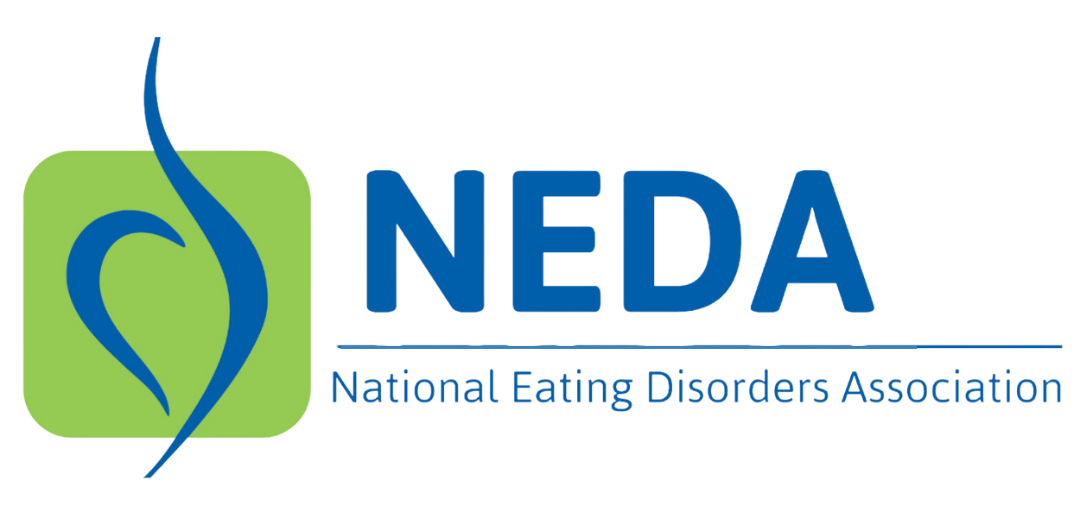Eating Disorders and Cocaine
StartYourRecovery.org (SYR) provides helpful information for people who are dealing with substance use issues — and their family members, friends, and co-workers, too. SYR knows that there is no one-size-fits-all solution to the challenges faced by those who misuse alcohol, prescription or illegal drugs, or other substances, and they aim to break through the clutter to help people at any stage of recovery.
Cocaine is an illegal stimulant that has gained cultural notoriety in the past 50 years. Its use can rapidly lead to health problems, including overdose, and people with eating disorders may be at greater risk of misusing and becoming dependent on cocaine.1
If you or a loved one is experiencing disordered eating and misusing cocaine, know that help is available and treatment works.
What is Cocaine?
Cocaine is a highly addictive and potentially deadly stimulant.
Cocaine comes in a powder that is snorted through the nose, rubbed on gums, or dissolved into a liquid and injected. Crack cocaine is cocaine in crystal “rock” form that is heated and smoked, sometimes in combination with marijuana or tobacco.2 Any form of the drug can be laced with other dangerous and deadly drugs, including fentanyl and amphetamines.2,3
People who use cocaine experience intense euphoria and a rush of energy caused by the release of chemicals in the brain.2 The effects wear off in five minutes to an hour and are followed by a crash. After a crash, people often take more cocaine to maintain the high. This can lead to becoming dependent on the drug and having withdrawal symptoms without it.
Taking cocaine in any form harms your body. For instance:
- Snorting the powder can lead to nosebleeds, loss of smell, and problems swallowing.
- Taking it orally (i.e., rubbing it on gums) can damage bowels.
- Smoking cocaine can cause asthma and lung damage.
- Injecting the drug through shared needles can transmit infectious diseases such as HIV and hepatitis C and injure skin and veins.2
The drug can also impair judgment, disturb eating or sleeping patterns, and cause seizures or sudden death.2,4 Cocaine use can lead to anxiety, mood swings, paranoia, memory loss, and hallucinations. Mixing cocaine with alcohol or other drugs increases the potential for harm.5 Withdrawing from cocaine can cause or worsen depression symptoms, including suicidal ideation, which is a psychiatric emergency.
Reducing and stopping use of cocaine benefits your health.6 If you’re dependent on cocaine, recovery is possible. 7
Help Prevent an Overdose
Powdered and crack cocaine can be laced with other powdered substances, including fentanyl and other dangerous opioids. The number of drug overdose deaths involving cocaine rose steadily from 6,784 in 2015 to 24,486 in 2021. This increase is attributed to the combination of cocaine and synthetic opioids such as fentanyl, according to the Centers for Disease Control and Prevention.8,9,10
Naloxone, known by brand names like Narcan and RiVive, is an over-the-counter medicine that can stop an opioid overdose and save a life.
If you suspect someone is experiencing a drug overdose:
- Call 911.
- Administer naloxone if it’s available.
- If the person is breathing slowly or not breathing, provide rescue breaths by pinching the person’s nose shut and gently blowing air into their mouth every five seconds until help arrives.11
- Keep the person awake and on their side until first responders arrive.
Learn about opioid overdose prevention.
Link Between Eating Disorders and Cocain Misuse
Both eating disorders and cocaine misuse are serious and can be fatal. Mortality risk increases when people who have eating disorders also use substances like cocaine. Some people with co-occurring eating disorders misuse cocaine or other stimulants because their eating disorder compels them to engage in risky behaviors to lose weight or suppress appetite.
Studies have shown that people with an eating disorder are significantly more likely than the general population to have a substance use disorder, and vice versa.12 Eating and substance use disorders share common risk factors, such as:13,14,15,16
- Anxiety.
- Depression.
- Family history of these or other mental illnesses.
- Low self-esteem or a susceptibility to social pressures.
- Traumatic life experiences.
Find Treatment and Start Your Recovery
Recovery from eating disorders and alcohol misuse is a personal journey, and there’s no single solution that works for everyone.22
Start by finding a trained health care professional to assess your mental and physical health needs. They can work with you to create a recovery plan.23 Find treatment and support for eating disorders and substance misuse.
Learn More
- Learn more about the link between substance use and eating disorders.
- Use the National Eating Disorders Association’s screening tool to help you determine whether it’s time to seek treatment for an eating disorder.
- Get free, confidential help for mental health or substance use disorders anytime by calling the Substance Abuse and Mental Health Services Administration’s National Helpline at 800-662-HELP (4357).
Sources
[1] Qeadan, F., English, K., Luke, A., & Egbert, J. (2023). Eating disorders and substance use: Examining associations among US college students. The International journal of eating disorders, 56(5), 956–968. https://doi.org/10.1002/eat.23892
[2] National Institutes on Drug Abuse. (2022). What is cocaine? National Institutes of Health. https://nida.nih.gov/publications/research-reports/cocaine/what-cocaine
[3] U.S. Drug Enforcement Administration. (2023). Drug dealer who sold fentanyl-laced crack sentenced to more than 16 years after four people died in a single day. DEA. https://www.dea.gov/press-releases/2023/06/12/drug-dealer-who-sold-fentanyl-laced-crack-sentenced-more-16-years-after
[4] Ersche, K. D., Stochl, J., Woodward, J. M., & Fletcher, P. C. (2013). The skinny on cocaine: insights into eating behavior and body weight in cocaine-dependent men. Appetite, 71, 75–80. https://doi.org/10.1016/j.appet.2013.07.011
[5] Enevoldson T. P. (2004). Recreational drugs and their neurological consequences. Journal of neurology, neurosurgery, and psychiatry, 75:iii9-iii15. https://doi.org/10.1136/jnnp.2004.045732
[6] Centers for Disease Control and Prevention. (2022). Why drinking less matters. https://www.cdc.gov/drinklessbeyourbest/drinking_less_matters.html?s_cid=NCCDPHP_google_search_drinkless_consequences_uc
[7] National Institute on Alcohol Abuse and Alcoholism. (2023). Treatment for alcohol problems: Finding and getting help. https://www.niaaa.nih.gov/publications/brochures-and-fact-sheets/treatment-alcohol-problems-finding-and-getting-help
[8] Centers for Disease Control and Prevention. (2023). Other drugs, Drug Overdose. https://www.cdc.gov/drugoverdose/deaths/other-drugs.html
[9] Centers for Disease Control and Prevention. (2023). Drug overdose deaths. https://www.cdc.gov/drugoverdose/deaths/index.html
[10] Substance Abuse and Mental Health Services Administration. (2023). Opioid overdose. SAMHSA. https://www.samhsa.gov/medications-substance-use-disorders/medications-counseling-related-conditions/opioid-overdose
[11] Seladi-Schulman, J. (2020). Rescue breathing for adults and children: Step-by-step guide. Healthline. https://www.healthline.com/health/rescue-breathing#definition
[12]Ganson, K. T., & Nagata, J. M. (2021). Associations between vaping and eating disorder diagnosis and risk among college students. Eating behaviors, 43, 101566. https://doi.org/10.1016/j.eatbeh.2021.101566
[13] National Center on Addiction and Substance Abuse at Columbia University. (2003). Food for thought: Substance abuse and eating disorders. Commonwealth Fund & National Institute on Drug Abuse. Available at: https://www.ojp.gov/ncjrs/virtual-library/abstracts/food-thought-substance-abuse-and-eating-disorders
[14] Eskander, N., Chakrapani, S., & Ghani, M. R. (2020). The Risk of Substance Use Among Adolescents and Adults With Eating Disorders. Cureus, 12(9), e10309. https://doi.org/10.7759/cureus.10309
[15] Ressler, A. (2008). Insatiable Hungers: Eating Disorders and Substance Abuse. Social Work Today, (8) 4, 30. Available at: https://www.socialworktoday.com/archive/070708p30.shtml
[16] Munn-Chernoff, M. A., Grant, J. D., Agrawal, A., Sartor, C. E., Werner, K. B., Bucholz, K. K., Madden, P. A., Heath, A. C., & Duncan, A. E. (2015). Genetic overlap between alcohol use disorder and bulimic behaviors in European American and African American women. Drug and alcohol dependence, 153, 335–340. https://doi.org/10.1016/j.drugalcdep.2015.05.043
[17] Bahji, A., Mazhar, M. N., Hudson, C. C., Nadkarni, P., MacNeil, B. A., & Hawken, E. (2019). Prevalence of substance use disorder comorbidity among individuals with eating disorders: A systematic review and meta-analysis. Psychiatry research, 273, 58–66. https://doi.org/10.1016/j.psychres.2019.01.007
[18] Substance Abuse and Mental Health Services Administration. (2011). Clients With Substance Use and Eating Disorders. SAMHSA Advisory, (10) 1. Available at: https://store.samhsa.gov/sites/default/files/d7/priv/sma10-4617.pdf

